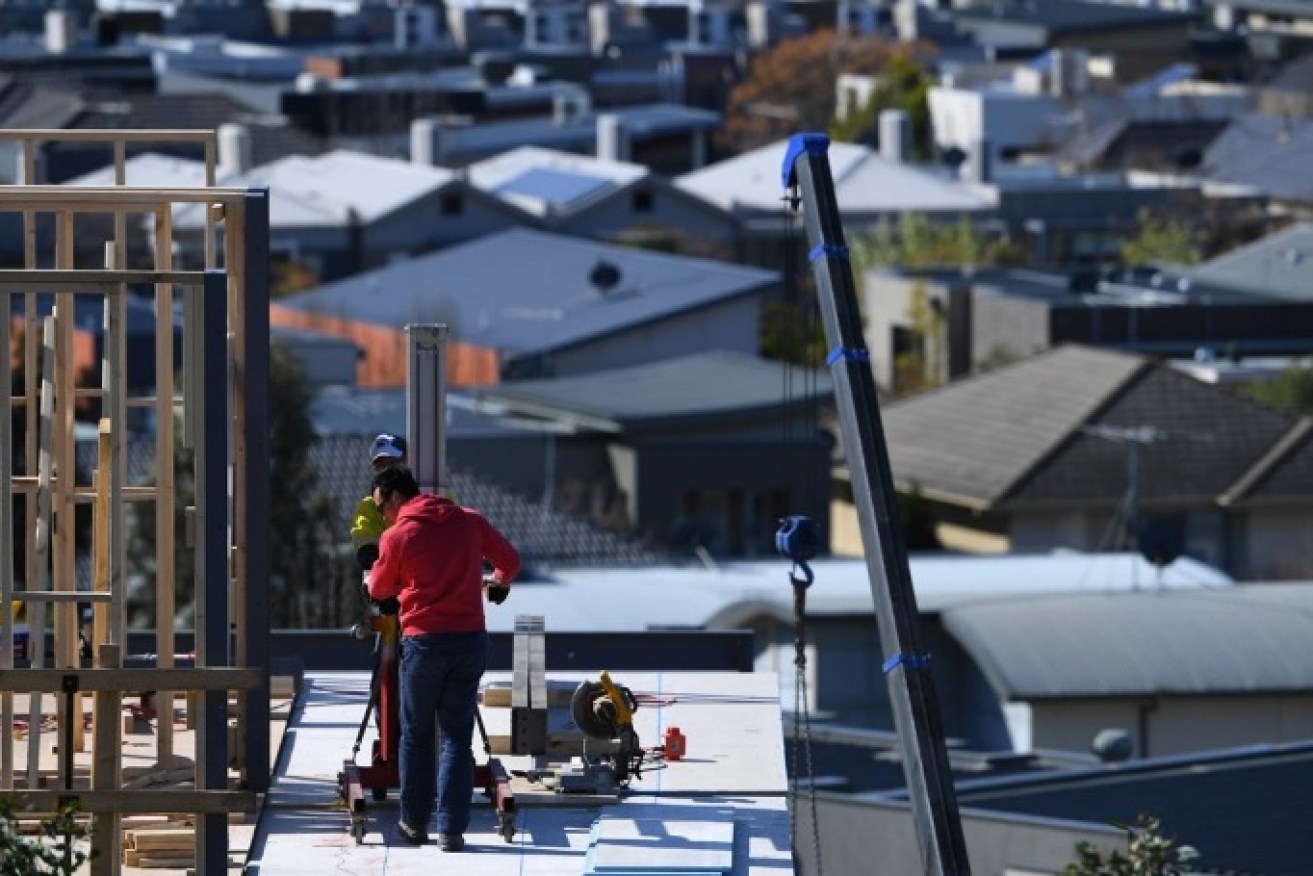Labour shortages hit home as backlog builds
South Australia’s building industry completed its lowest number of residential projects in almost a decade in the March quarter, despite having a record $4.55 billion worth of homes under construction.


Picture: James Ross/AAP
The sluggish completion rate coincided with the state’s largest COVID-19 wave to date and the associated strict isolation rules in the first three months of the year that brought many building sites to a standstill.
Australian Bureau of Statistics data released last week shows there were just 2036 South Australian dwellings completed in the March quarter, the lowest quarterly figure since March 2013.
The data also shows there were 2657 houses approved but still waiting for work to commence. While this was down from 3679 in the September quarter and 2857 in the three months to December 31, it was the second highest in Australia after New South Wales.
However, the South Australian data shows that there is still more residential building work coming in than there is being completed.
In the three months to the end of March, work began on 3316 dwelling units in South Australia, down from 4166 in the December quarter and the lowest of any mainland state.
There were also 1303 dwellings approved in South Australia in April and 1054 in May, meaning the lag is likely to continue well into the June quarter.
For the past 30 years, there have been between about 6500 and 8500 new homes built in South Australia annually.
But the HomeBuilder scheme introduced following the onset of the COVID-19 pandemic in mid-2020 resulted in 11,278 new builds in 2020 and about 12,000 in 2021.
Last year, a shortage of materials such as structural timber threatened to derail the boom and have led to cost increases and project delays.
Master Builders SA CEO Will Frogley said while the supply issues had improved somewhat this year, labour shortages were now proving the biggest challenge.
“Everyone has really been struggling with not just materials but labour and jobs being delayed because people have been out with COVID so it’s definitely taking a lot longer to build than it normally would,” he said.
“There weren’t enough people before the rise in COVID cases so it’s pretty challenging – everyone’s flat out but not really making much money or enjoying it.
“Timber is getting a little bit better but supply will still be an issue for the rest of this year and the cost of building materials is going up at the highest rate in more than 40 years so it’s challenging.
“We haven’t seen the insolvencies here that we’re seeing interstate yet but I do worry about it.”
The total value of residential buildings under construction in South Australia hit a record $4,554,305 million in the March quarter up from $4,147,032 million in the December quarter.
New houses accounted for about $3.13 billion of this total residential value, up from $2.9 billion in December.
The value of residential work done in the quarter also reached a record of $1.14 billion.
However, the value of work commenced dropped to $925 million, its lowest level since December 2020.
The record value of live building projects also reflects increased prices and the greater volume of incomplete builds still in the system.
The SA industry is only just starting to see a slowdown in demand from interest rate rises in May, June and July.
“Demand has hung in there pretty well but I expect that to cool down given all the publicity about rising interest rates and some of our members are saying that their sales inquiries are starting to dry up,” Frogley said.
“It’s good for people being employed and getting more kids into apprenticeships but it’s also very challenging because it’s very hard to price jobs in the current environment and with so many people out sick.”
Thursday’s 48-year low unemployment rate in Australia of just 3.5 per cent has prompted predictions from economists of another 0.5 per cent interest rate increase in August to combat potential wage increases.
The RBA has said it will continue increasing rates until inflation – currently sitting at 5.1 per cent – returns to its target band of 2 to 3 per cent.
Frogley said rising interest rates would allow the industry to play catch up.
“If things cool off a bit that would actually be welcome because the market would be more stable and therefore easier to predict, especially when it comes to pricing jobs and accessing materials and trades,” he said.
“I don’t want to downplay inflation as an issue but we’ve got to remember that whilst interest rates are going up, they are going up from a record low and it’s still way below where it was in the 1980s and ‘90s for example.”




